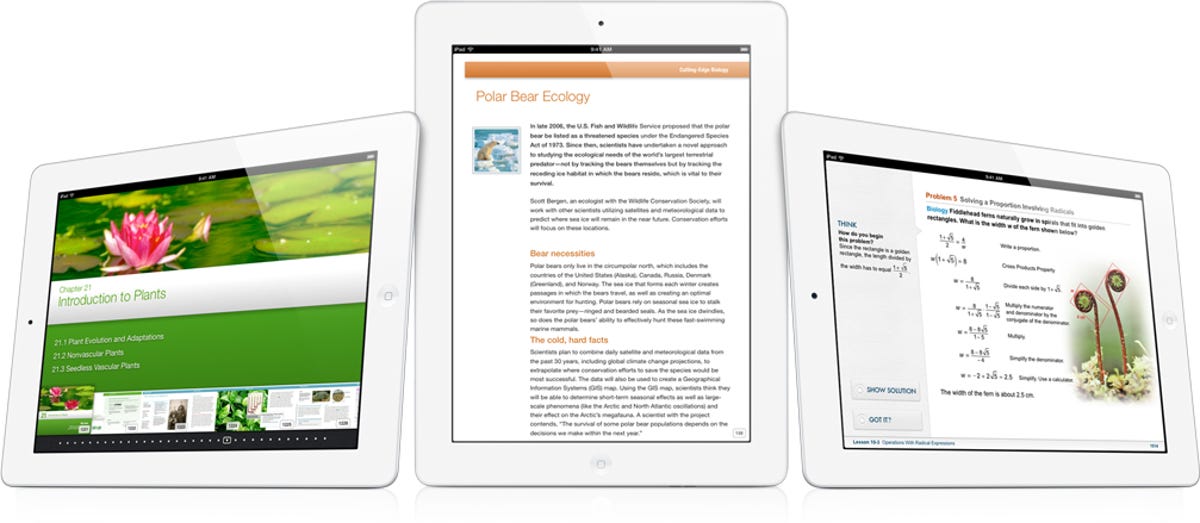After a yearlong pilot program in California initiated by publisher Houghton Mifflin Harcourt, the math scores of students using iPads jumped 20 percent compared with classrooms that used traditional paper textbooks.

Apple
HMH Fuse: Algebra I was instituted at Amelia Earhart Middle School in the Riverside Unified School District as the world’s first iPad-driven algebra curriculum. According to the HMH official press release, 78 percent of students in the pilot program scored “proficient” or “advanced” on the California Standards Test for spring 2011.
Compared with the 59 percent of students that had the same rating using traditional textbooks, the iPad program seems to have been quite successful. HMH also notes that students in the pilot program were “more motivated, attentive, and engaged than traditionally educated peers.”
“By engineering a comprehensive platform that combines the best learning material with technology that embraces students’ strengths and addresses their weaknesses, we’ve gone far beyond the capabilities of an e-book to turn a one-way math lesson into an engaging, interactive, supportive learning experience.”
Since Apple’s announcement of iBooks 2 and iBooks Author, the education world has been buzzing. The two sides essentially boil down to:
- Technology in the classroom is a distraction and should be used sparingly (if at all) for learning.
- Technology in the classroom is essential to helping children learn, especially given the shift in available jobs from manufacturing to technology-related professions.
The HMH Fuse program certainly gives the latter argument a big boost. One of the most important characteristics of the iPad, one that I have noticed with my own nephews, is how personal the device is to kids. They can touch it and that makes sense to them. Books have a cold presence to them. A “you can get, but you cannot give” sentiment that can be off-putting to young people.
By providing children with the best tools, you empower them to think independently about bigger problems. They become solution-oriented by nature. They can use their energy to wonder and create instead of mindlessly memorizing inane theorems, dates, and other information that is easily accessible using technology.
It’s the old saying, better to teach a man to fish. In my humblest of opinions, it’s better to teach a child to learn than to cram memorized facts in their head to pass a test. iPads (and the curriculum available on them) have a unique ability to connect us with information in a way that feels natural, intuitive, and should be used as much as possible in classrooms.
Of course, there are many sides and philosophies regarding the education of children, and using technology is just a small piece of the greater puzzle. From education reform to creating more incentive for teachers to be great, the challenges are big. A program like HMH Fuse succeeding is a step in the right direction.
What do you think the role of technology in the classroom should be? Let me know your thoughts in the comments!



